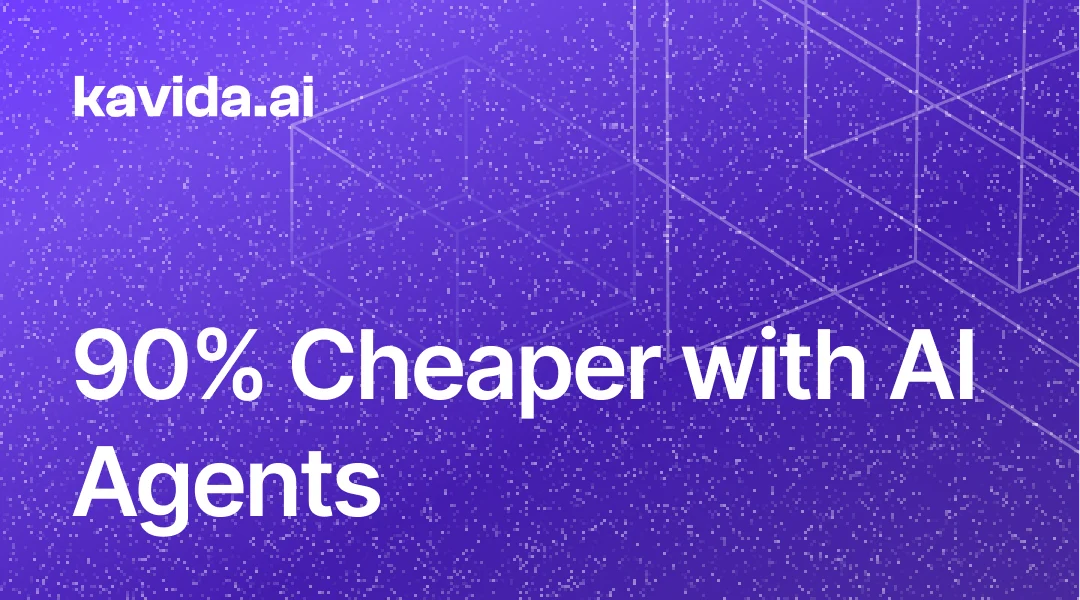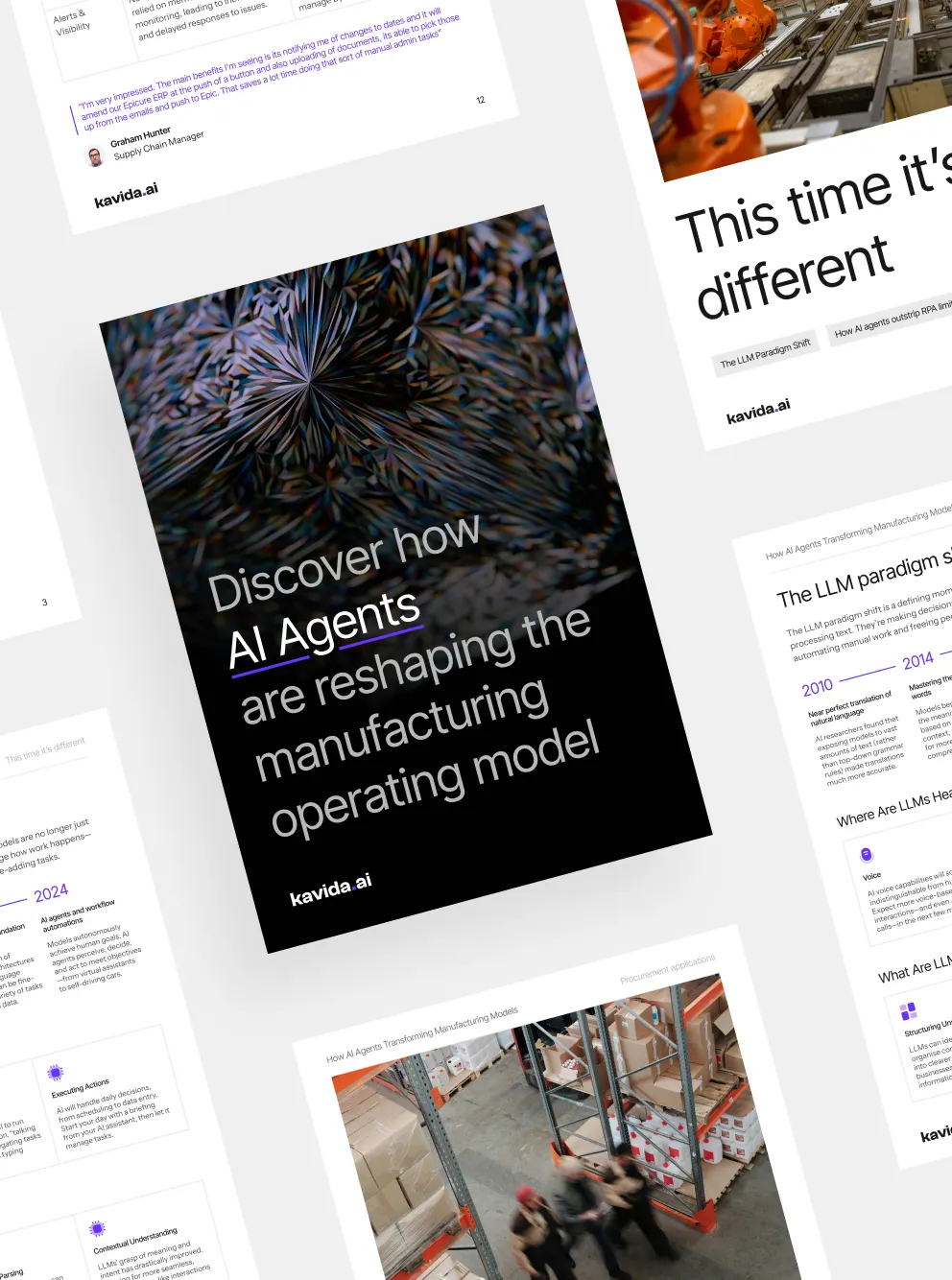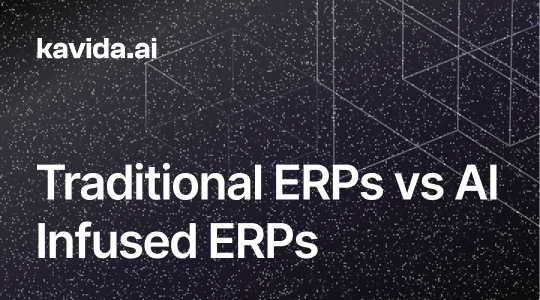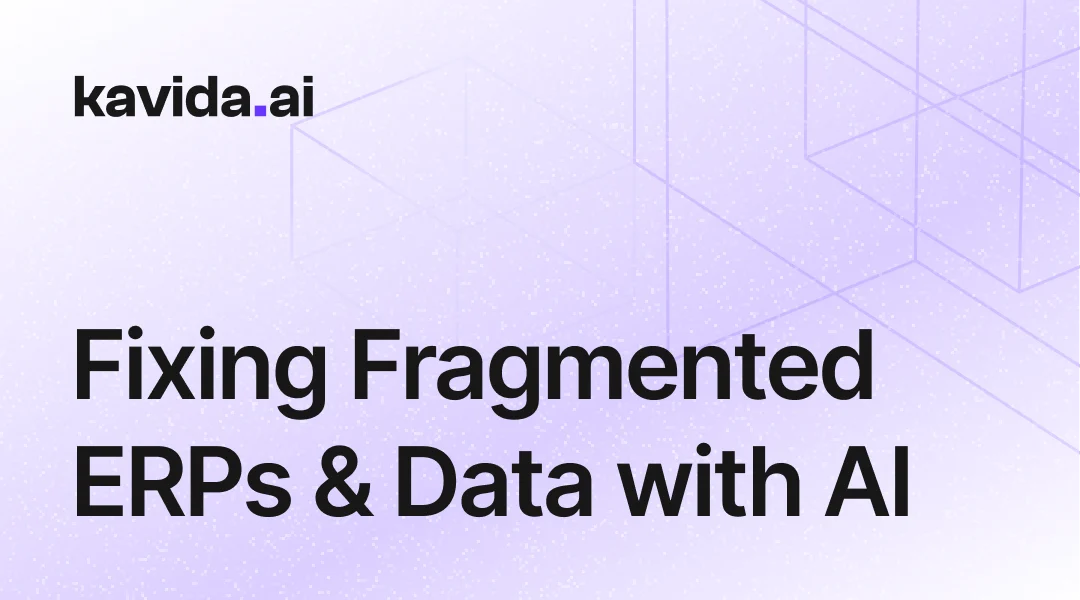
ANNOUNCEMENT
QAD Redzone acquires Kavida — our Agents have joined the Champion AI family

Discover how AI agents are reshaping the manufacturing operating model

Hi, I’m Alison!
Share your details, and I’ll give you a call in minutes to see how we can assist.

Integrating Agent PO with Different Systems and Data Modules
Table of Contents
ToggleManufacturers have an ever-expanding set of tools to manage different aspects of their operations, from resource planning to supply chain visibility. The power of Agent PO lies in its ability to seamlessly integrate with these varied systems and tools, providing real-time decision intelligence and automated workflows that boost productivity across departments.
Let’s take a closer look at how Agent PO’s integrations work, what types of tools are involved, and how different integration methods facilitate this interoperability.
Types of Systems And Tools Agent PO Integrates With
Agent PO integrates with multiple tools that manufacturers use in their tech stack, bringing together diverse data streams and enabling intelligent decision-making and workflow automation. The main categories of tools include:
Tool Type | Description | System and Tool Name | Integration Method |
Enterprise Resource Planning (ERP) Systems | ERPs are at the heart of a manufacturer’s operations, housing key data about production, inventory, procurement, finance, and more. Agent PO integrates directly with popular ERPs, allowing real-time data exchange. | SAP, Microsoft Dynamics 365, Infor CloudSuite, Oracle ERP | API Access |
Warehouse Management Systems (WMS) | WMS solutions are essential for managing inventory, tracking goods, and optimizing warehousing operations. By integrating with a WMS, Agent PO can ensure that procurement, inventory, and stockout alerts are always based on the most recent data. | Oracle NetSuite, Manhattan Associates, Blue Yonder | API Access, File Exchange |
Procure-to-Pay (P2P) Tools | P2P tools streamline procurement, invoicing, and payments. Agent PO’s integration with P2P systems allows manufacturers to automatically match invoices to purchase orders and goods received notes (GRNs), reducing manual work and errors in financial reconciliation. | Coupa, Ariba, Basware | Webhooks, API Access |
Contract Management Tools | Procurement contract management tools are used to create, negotiate, and execute contracts related to procurement activities, providing visibility and ensuring compliance with agreed terms. | Gatekeeper, Cobblestone, Symfact | API Access, Webhooks |
Collaboration and Project Management Tools | Agent PO integrates with contract management tools, Customer Relationship Management (CRM) systems, and collaboration tools for project management and team communication. | Microsoft Teams, Asana, Trello | API Access |
Integration Types: Push and Pull
Agent PO’s integrations can be broadly categorized into two types:
- Push Integration: In push integration, data is pushed from one system to another in real time or at defined intervals. For instance, when a new purchase order is created in an ERP like SAP, it can be pushed to Agent PO for automated order confirmation or tracking workflows. This kind of integration is especially useful for workflow automation and ensuring that Agent PO has the latest data available to trigger actions.
- Pull Integration: Pull integration involves Agent PO querying another system for updated data at regular intervals or when triggered by a user request. For example, when generating a daily delivery report, Agent PO might pull the latest shipping and inventory data from Oracle NetSuite to provide a comprehensive overview.
Both push and pull integration strategies enable Agent PO to ensure that it always has accurate, timely information, without overwhelming any one system with excessive data updates.
Security and Data Compliance Best Practices for Integrations
When integrating different systems and tools, it is crucial to ensure data security and compliance with industry standards. Here are some best practices to follow for secure and compliant integrations:
- Data Encryption: Ensure that all data in transit and at rest is encrypted. This is especially important for sensitive information shared between systems.
- Authentication and Authorization: Use secure authentication methods like OAuth 2.0 to ensure that only authorized systems and users can access or push data. Role-based access control (RBAC) should be used to limit access based on user roles.
- Audit Logs: Maintain detailed audit logs of all integration activities. This provides transparency and traceability, which is crucial for identifying issues and ensuring compliance.
- Compliance Standards: Ensure that integrations comply with relevant industry standards such as GDPR, CCPA, and ISO 27001. This is essential for maintaining customer trust and avoiding legal liabilities.
- API Rate Limiting: Implement API rate limiting to prevent abuse and ensure that no single system is overwhelmed by excessive requests, which could lead to service disruptions.
- Regular Security Testing: Perform regular security tests, such as penetration testing, to identify vulnerabilities in integration points and address them proactively.
By adhering to these best practices, Agent PO ensures that all integrations are secure, reliable, and compliant with industry standards, minimizing risks while maximizing efficiency.
Leveraging Integrations for Smarter Manufacturing
By integrating with ERPs like SAP, WMS systems like Oracle NetSuite, and P2P tools like Coupa, Agent PO acts as a bridge that connects data from different departments into a unified decision-making and automation platform. It helps manufacturers reduce manual processes, improve accuracy, and make better-informed strategic decisions. Whether it’s pulling data for supplier scorecards or pushing alerts for shipment delays, Agent PO’s flexible integration framework plays a crucial role in maximizing productivity.
These integrations don’t just streamline operations—they also empower teams to access insights and collaborate in real time using tools like Microsoft Teams or Asana. This ensures that all stakeholders, from production planners to procurement officers, are always on the same page, working with the most up-to-date data available.
Author:

Kevin Musprett
Head of Growth at Kavida.ai
Kevin drives GTM at Kavida, an AI agent used by manufacturing purchasing teams so they never miss a critical order from suppliers. Kevin dedicates himself to building and scaling kavida.ai to become the PO management platform of choice for an addressable market of over 15 million users.
Related articles

Agents Achieve Business Outcomes 90% Cheaper Than Humans
Most automation stories start with tasks — fewer clicks, faster data entry, less time spent on admin. But tasks...

The Limitations of Traditional ERPs vs. AI-Infused ERPs: How Agent PO Solves the Gaps
Enterprise Resource Planning (ERP) systems have been at the heart of manufacturing, procurement, and supply chain operations for decades.

How Agentic AI Unblocks Value Across ERP Fragmented Systems
For decades, the “single ERP” strategy has been positioned as the ultimate route to operational...
